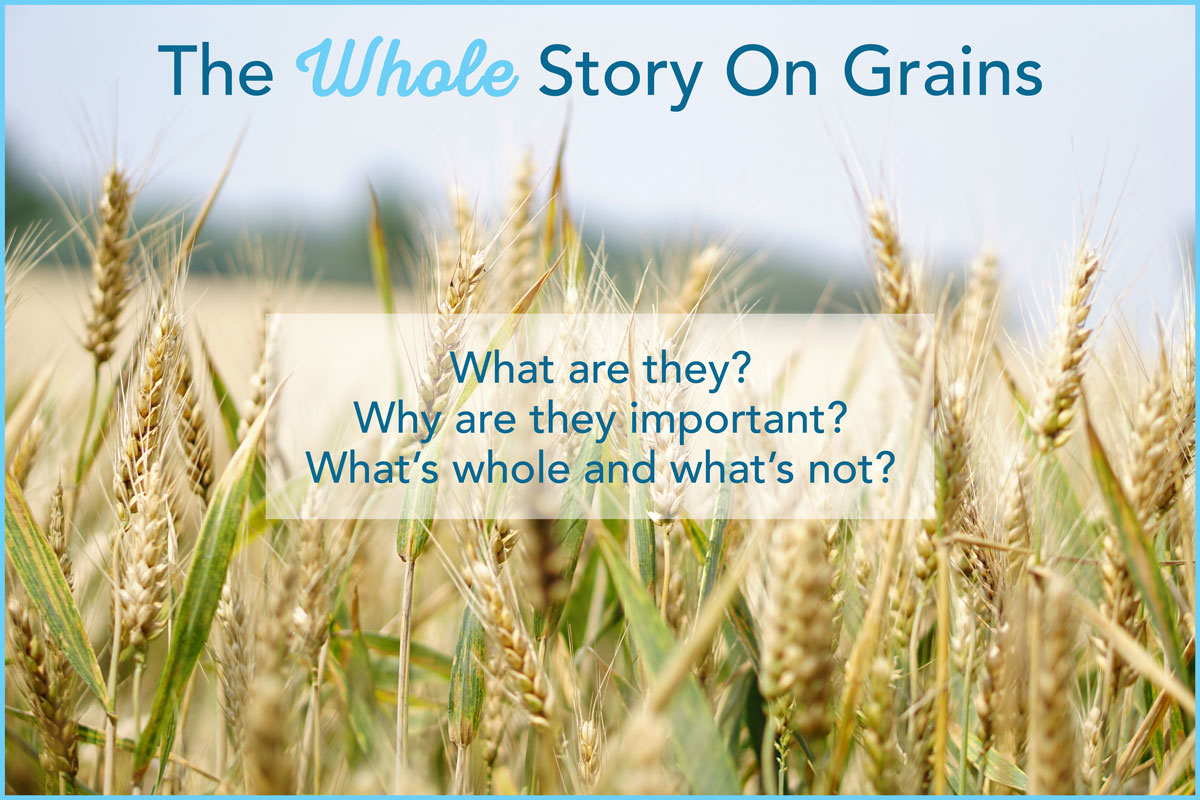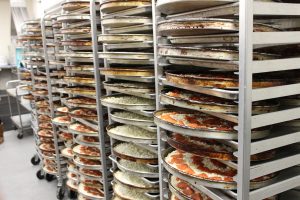
The Whole Story on Whole Grains
October 29th, 2019
The Whole Story
Most of us have heard of whole grains and their touted health benefits. But what exactly is whole grain, and how much are we supposed to include as part of our daily diet? We’re about to give you a solid overview of these healthy and tasty bits of nature.
Let’s start with the basics. Any food made from wheat, rice, oats, cornmeal, barley, or another cereal grain is considered a grain crop. Bread, pasta, tortillas, and breakfast cereals are all products of grain crops.

Freshly prepared pizzas, with dough from Colors Gourmet Pizza, and home made sauce and custom toppings, await the commercial grade pizza oven.
We divide grains into two subgroups: whole grains and refined grains. Whole grains contain the entire grain kernel — the bran, germ, and endosperm. Examples of whole grains include whole-wheat flour, bulgur, stone ground oatmeal, whole cornmeal, and brown rice among others.
Refined grains have been milled in order to remove the bran and germ. This is done to give the grains a finer texture and improve their shelf life, but it also removes important nutrients like fiber, iron, and many B vitamins. Thus, these nutrients are added back into the mix, creating enriched grains. Some examples of refined and enriched grain products are white flour, white bread, and white rice. Most baked donuts, muffins and pizza doughs are made with refined or enriched grains.
How Many Grain Foods Are Needed Daily?
The amount of grains you need to eat depends on your age, sex, and level of physical activity. Recommended daily amounts vary, and can be found on the daily grain table on MyPlate’s website. Most Americans consume enough grains, but few are whole grains. At least half of all grains eaten should be whole grains.
Read The Label
Telling which items at the grocery store are whole grain or refined grain is not always easy. The Whole Grains Council created an official packaging symbol in 2005 called the Whole Grain Stamp that helps consumers find real whole grain products.
But what if there is no stamp? First, check the label of your product. Many items will include the number of grams of whole grains or say something along the lines of “made with 100% whole grains. Be careful if you see the words “whole grain” without additional information. Statements such as “made with whole grain” can be misleading and only contain small amounts of whole grains.
Feel Confident About These
These are words you may see on packages that are sure signs you are buying a whole grain product:
whole grain [name of grain]
whole wheat
whole [other grain]
Stone ground whole [grain]
brown rice
oats, oatmeal (including old-fashioned oatmeal, instant oatmeal)
wheatberries
Tread Carefully
These words may mean you are getting a whole grain products, but also could accompany items made mostly with refined grains — these are the ones to be wary of:
wheat
semolina
durum wheat
organic flour
stoneground
multigrain (may describe several whole grains or several refined grains, or a mix of both)
We’ve Got You Covered (in whole grains)
Luckily, WaveCrest Cafe has done a lot of the work for you. USDA nutritional standards ensure that your student is getting their servings of whole grains every day — starting in the 2019-2020 school year, half of the weekly grains offered during school meals must be whole grain-rich. Items like our WaveCrest Pizza and the Carnitas Street Tacos are packed with whole grains, and delicious too! Check out the resources below if you’re interested in incorporating more whole grains into your diet at home.
Sources:
https://www.choosemyplate.gov/grains
https://www.choosemyplate.gov/grains-tips
https://wholegrainscouncil.org/whole-grains-101/identifying-whole-grain-products
https://wholegrainscouncil.org/get-involved/celebrate-whole-grains-month-september
